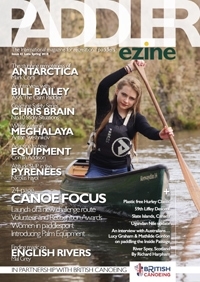Grade: 2-6
The most notable section is the waterfall at Cauldron Snout. This is grade 5+/6.
The rest of the sections of the tees range from grade 2-3 with some grade 4 in high waters.
A river in the North of England, the River Tees rises in the North Pennines. It then flows east for 85 miles until it reaches the North Sea near Middlesbrough.
Flowing through Durham and Yorkshire, there are a number of tributaries to the Tees. These include the Greta, Lune and Leven.
The River Tees is a popular river with white water paddlers. Stretches of the river range from a gentle grade 1 to a forceful grade 4. Make sure you check the area you plan to paddle for its grading and river level.
It runs through the North Pennine Area of Outstanding Natural Beauty, so there are stretches of beautiful scenery. That said, the river is predominantly used by white water paddlers.
If you want to practice a little slalom action, Abbey Rapids between Barnard Castle and Winston is a well known and popular slalom site, with competitions hosted throughout the season.
Seals on the River Tees
One thing paddlers should be aware of is common seals populate the area at Teesmouth Nature Reserve on Seal Sands. If you plan on stopping here, make sure you only stop in designated areas and do not disturb the seals during pupping time. This usually happens from late Autumn through the winter months.
Around the reserve you see migratory ducks and waders. In winter, Knot from Greenland and the Canadian Arctic, Shelduck, Teal and Sanderling can be seen.
In spring, Ringed Plover, Lapwing, Oystercatcher and Snipe nest along the River Tees at the Reserve. Sandwich Terns stay for a few weeks during July and August. Cormorant, Curlew and Redshank arrive in large numbers for the autumn.




 Go Paddling
Go Paddling Clear Access Clear Waters
Clear Access Clear Waters Paddles Up Training
Paddles Up Training Clubhouse
Clubhouse Services Login
Services Login

